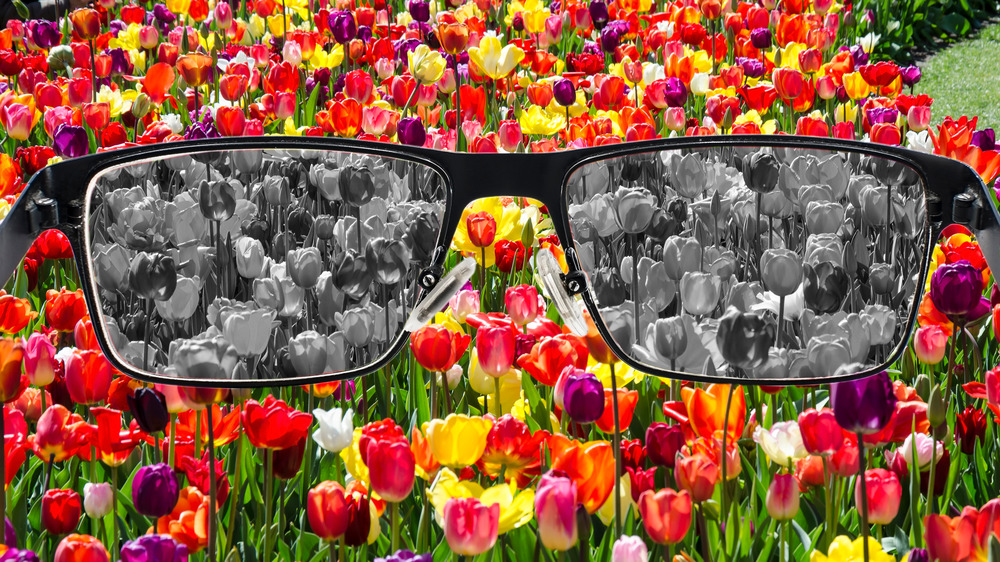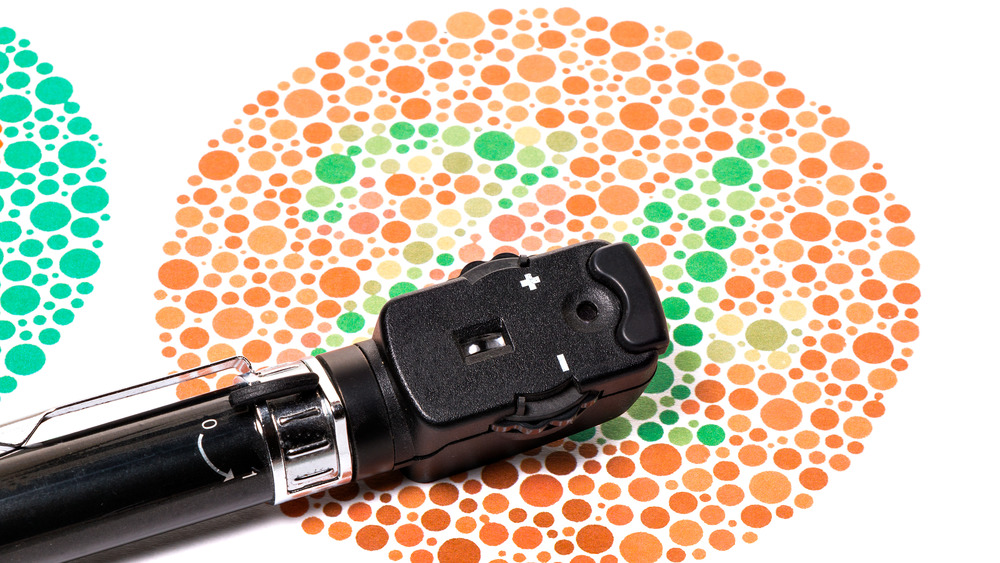What People Really See When They're Color Blind
Have you ever noticed how a bright red bird stands out so vividly against the tree it's sitting in? Now imagine that red bird didn't look red at all. Instead, it blended in with the green leaves. If you were color blind, you wouldn't have to imagine.
The gene that can cause color blindness is only found on the X chromosome. But because it is recessive, males are much more likely to have it, since they only need one copy of the gene. Color blindness is caused by mutations in the genes that help produce proteins in your retina, the tissue at the back of your eye that senses light (via Medline Plus). Cells in the retina called cones are responsible for taking in color and then sending a signal to your brain. Your brain then makes the signal into an image.
Different types of cone cells are better at sensing different wavelengths of colored light, because of special pigments they each contain. If your eye doesn't have the right kind of cone cells, or if the cone cells don't make enough of these pigments, you might not be able to see certain colors. The most common mutations cause red-green color blindness, blue-yellow color blindness, and even complete color blindness.
Not all color blindness is the same
What is it like to live with these conditions? If you are red-green colorblind, you'll find it hard to tell the difference between the two colors (via Healthline). Want to wear that new red sweater? You may have a harder time picking it out of your closet than someone who can see the full spectrum. That's because depending on what particular type of red-green color blindness you have, that red sweater may actually look green to you.
Want to wear a green sweater instead? If you have blue-yellow color blindness, be careful, since that one may actually appear blue! Those with this less-common condition have trouble telling apart different shades of blue, or colors close to blue. While less common, achromatopsia, or complete color blindness, literally causes the world to look different shades of grey.
While living with color blindness may sound a little bleak, many people find practical and creative ways to deal with it, like labeling things or changing the accessibility settings on their phones or computers. If you suspect you may be color blind, be sure to check with an eye care professional for an assessment.


